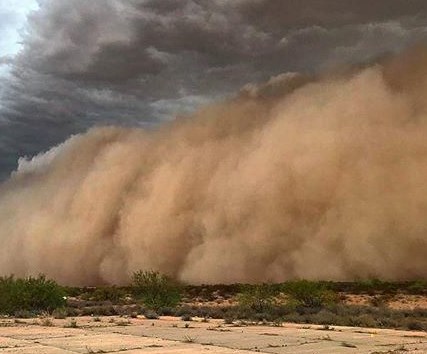Impact of Human Activities on Global Dust Emissions
The United Nations Convention to Combat Desertification (UNCCD) revealed that human activities contribute to 25% of global dust emissions, with agriculture standing out as the primary anthropogenic source. These findings emerged during a five-day meeting held in Uzbekistan from November 13-17, where policy recommendations were released.
Annual Migration of Sand and Dust
Every year, over two billion tonnes of sand and dust traverse thousands of kilometers through the Earth’s atmosphere. This phenomenon poses a significant meteorological challenge characterized by strong and turbulent winds lifting small particles to considerable heights.
Impact on Health, Environment, and Economies
Sand and dust storms, affecting regions from Northern and Central Asia to sub-Saharan Africa, have adverse effects on human health, the environment, and economies. The United Nations Food and Agriculture Organization (FAO) identifies them as a formidable obstacle to achieving 11 out of the 17 Sustainable Development Goals.
Sources of Sand and Dust Storms
Approximately 75% of sand and dust storm emissions originate from natural sources in the world’s drylands, including hyper-arid regions, topographic depressions in arid areas, and dry ancient lake beds. The remaining 25% is attributed to anthropogenic factors such as land-use change, agriculture, water diversion, and deforestation.
Human-Induced Factors
Abandoned croplands become sources of sand and dust storms, while water consumption in agriculture contributes by shrinking water bodies. For instance, the excessive diversion of water from rivers in Central Asia has transformed the Aral Sea into the Aralkum Desert, a new source of sand and dust storms.
Climate Change’s Role
Climate change amplifies the impact, with extreme wind events, aridity, severe droughts, and rising temperatures exacerbating the frequency and severity of sand and dust storms.
Undetermined Impacts
Despite the evident impact on crops, trees, pastures, and livestock, many consequences remain inadequately quantified. The FAO cites examples like a two-day storm in Mongolia in March 2021, affecting thousands of households, leading to casualties, and a significant loss of livestock.
Urgent Need for Policy
The FAO report emphasizes the absence of policies addressing the risks posed by sand and dust storms. It calls for the establishment of risk monitoring and early warning systems, strengthening risk governance, increased investment in risk reduction measures, and raising awareness of this environmental challenge at the national level.
Month: Current Affairs - November, 2023
Category: Environment Current Affairs


